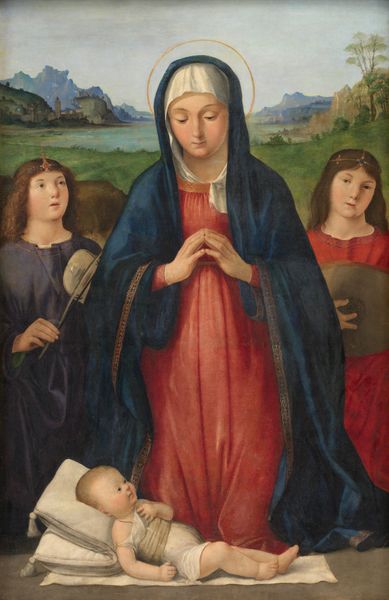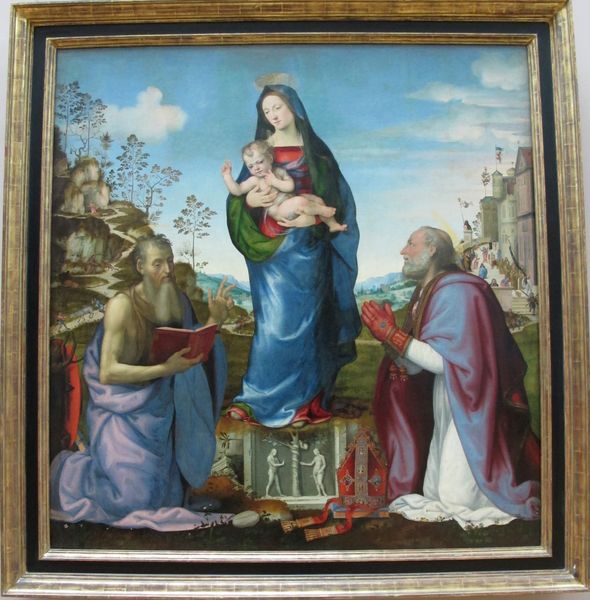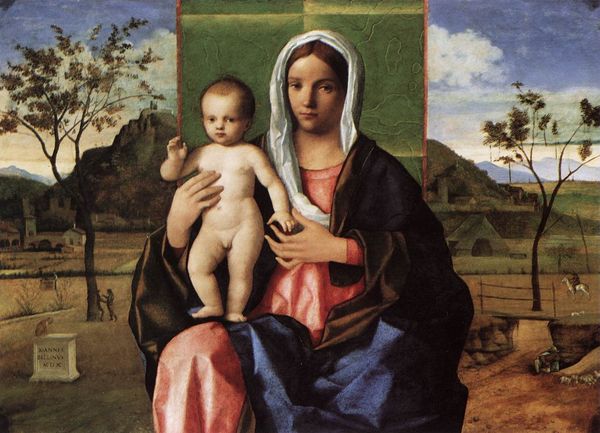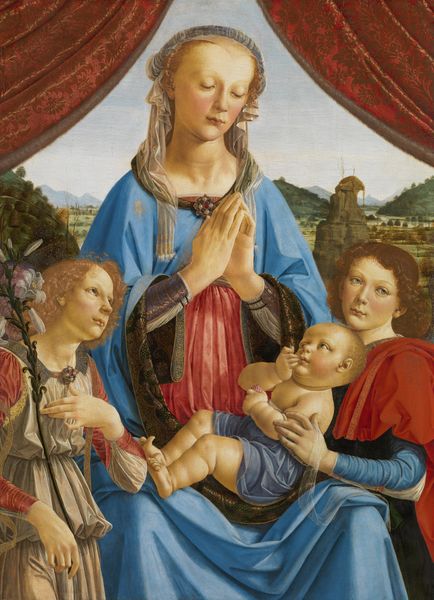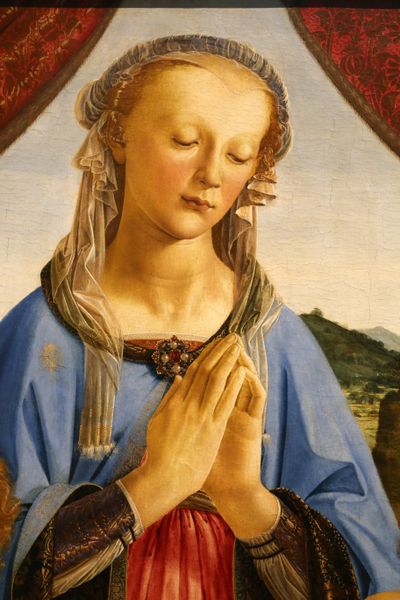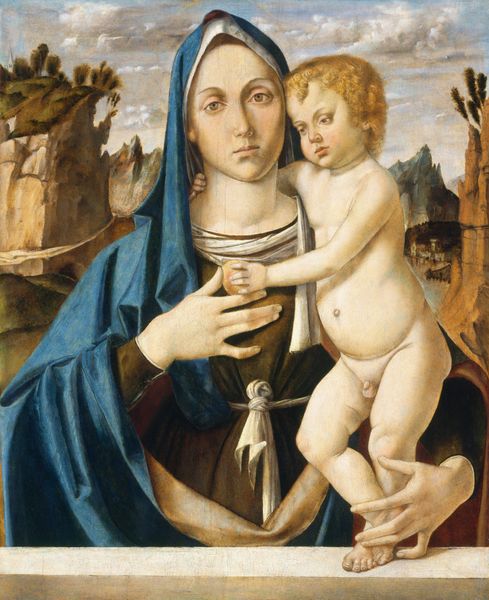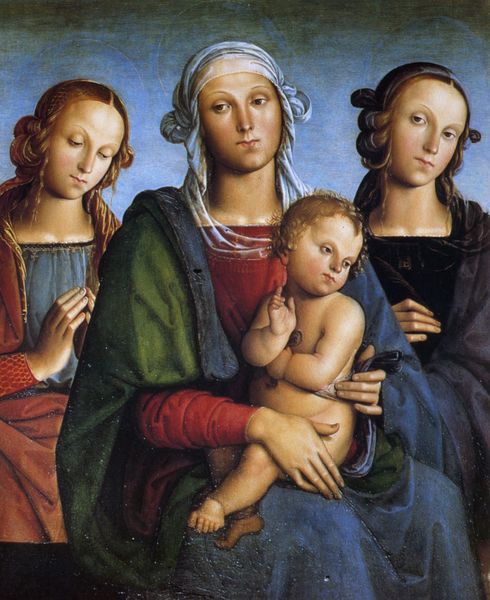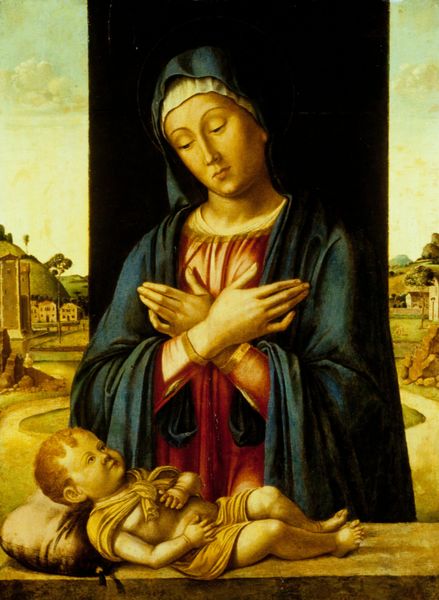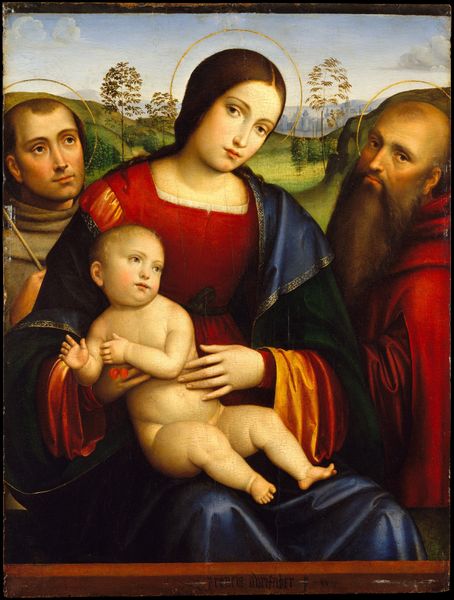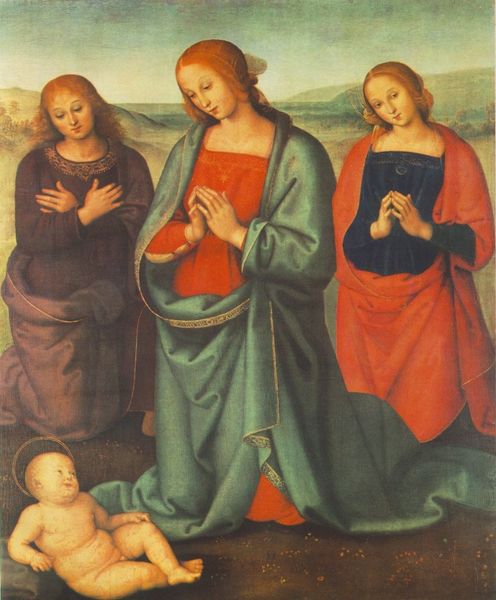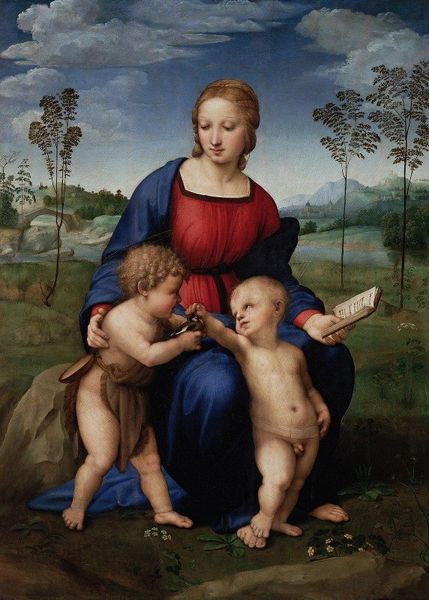
painting, oil-paint
#
portrait
#
high-renaissance
#
painting
#
oil-paint
#
oil painting
#
portrait reference
#
mythology
#
portrait drawing
#
genre-painting
#
history-painting
#
italian-renaissance
Copyright: Public domain
Curator: We’re looking at "Madonna and Child with Donors", attributed to Palma Vecchio, rendered in oil paint, an exemplar of Italian Renaissance artistry. The composition seems divided, almost as if two portraits were combined. Editor: It feels remarkably pious but with this unusual horizontal orientation that complicates the usual symbolic gestures. The color is applied quite thickly; is that original? Curator: Indeed, Palma Vecchio was celebrated for his vibrant use of color, layering pigment to create depth and luminosity. Observe the intricate draping of the fabrics and how they cascade around the figures—how does that affect your interpretation? Editor: Well, these are very lush materials—silk and velvet, probably—meant to show off the wealth of these donors, contrasted so sharply with the rather… ordinary representation of Mary's garments, especially the utilitarian knot on her tunic, practically bisecting the painting’s main visual thrust. Curator: Precisely. Note too, that background detail of landscape, castle, riders… a tapestry really, not actual three-dimensional space, creating flatness which serves to foreground Mary and the donors, and how the painter's choice of subject is emphasized through the use of hierarchic scale. The Madonna is presented in the largest proportion. Editor: And these wealthy patrons purchase their space and piety within the artwork through materiality, juxtaposed directly with Mary's blessing! Fascinating contrast—commerce made art. Curator: Precisely. In conclusion, the painting operates not merely as a devotional object but a powerful symbolic transaction—spiritual virtue made concrete. Editor: Yes, an object made rich both through devotion and mercantile transaction. A neat material exchange preserved by art.
Comments
No comments
Be the first to comment and join the conversation on the ultimate creative platform.

